Pneumonia art: Combining my own lung X-rays and delirium diaries with Midjourney AI
I’ve had pneumonia again. Odd thing about it – and maybe why so many people die of it each year without seeking timely help – is how it creeps up. As it does, it can be painful, and at the same time make you floaty & detached. It’s… quite moreish. A bit like nitrogen narcosis, the ‘rapture of the deep’ experienced by divers.
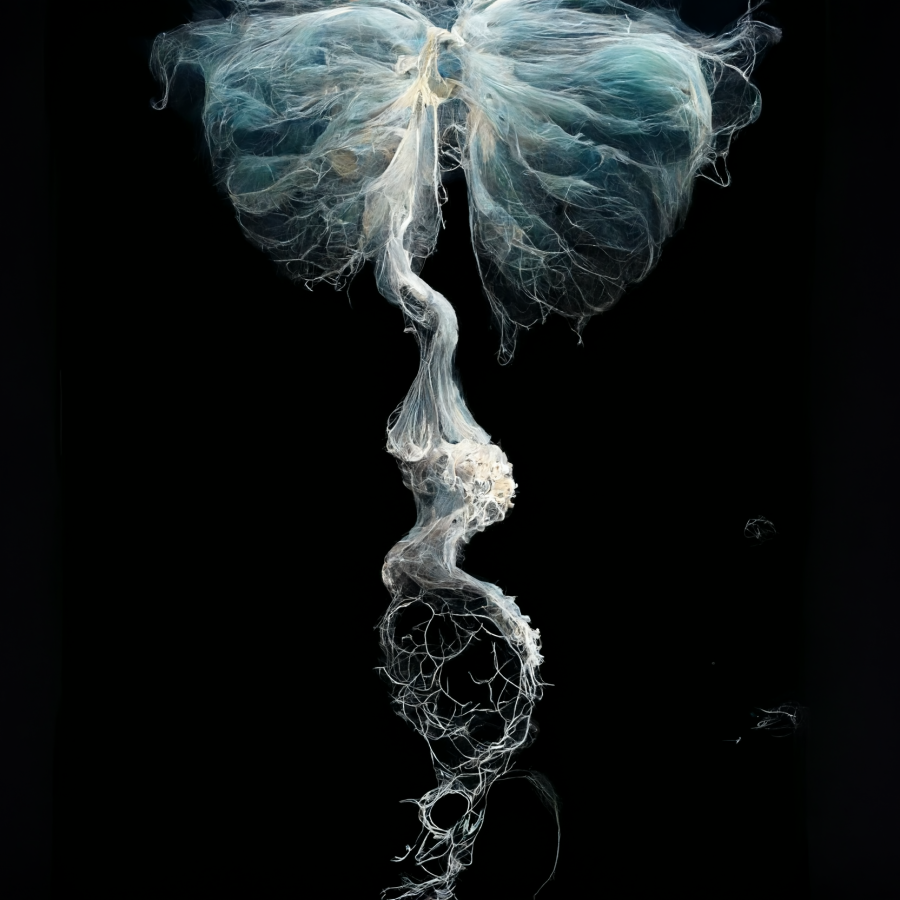
That’s pneumonia’s trick. I’ve had it a few times, and I know it quite well now. You don’t have it at first, just a cough then bronchitis, then this, then that. Then you want to sleep a lot. You get weaker, find yourself making all sorts of excuses not to do something. Then you’re in pain, and your lungs can feel either permanently fluffed and grating, then there’s a cannon ball in your lungs, rolling through you like heavy cargo. You should tell someone about that, but you don’t because maybe it will go. But instead it’s cold sweats, fevers, weird illogic, loss of appetite, and difficulty breathing; then without realising it, you don’t mind, and you just want to rest and dream. You become Pluto.
I remember thinking that a lot. I was Pluto, held in the solar system by the thinnest, most tenuous, most distant of gravities. Almost drifting. Which feels right. That’s why people die of it. They don’t want to. But by the time it’s on you and you know it, you’ve become a bit woozy with it, and you just want to drift off.
I’ve been a creative for a long time though. I know that the dream or fever state, when things start to go blurry and lose their names, is one of openness too. So I made up my mind to use the pneumonia. If it was going to consume me, I’d remake it too.
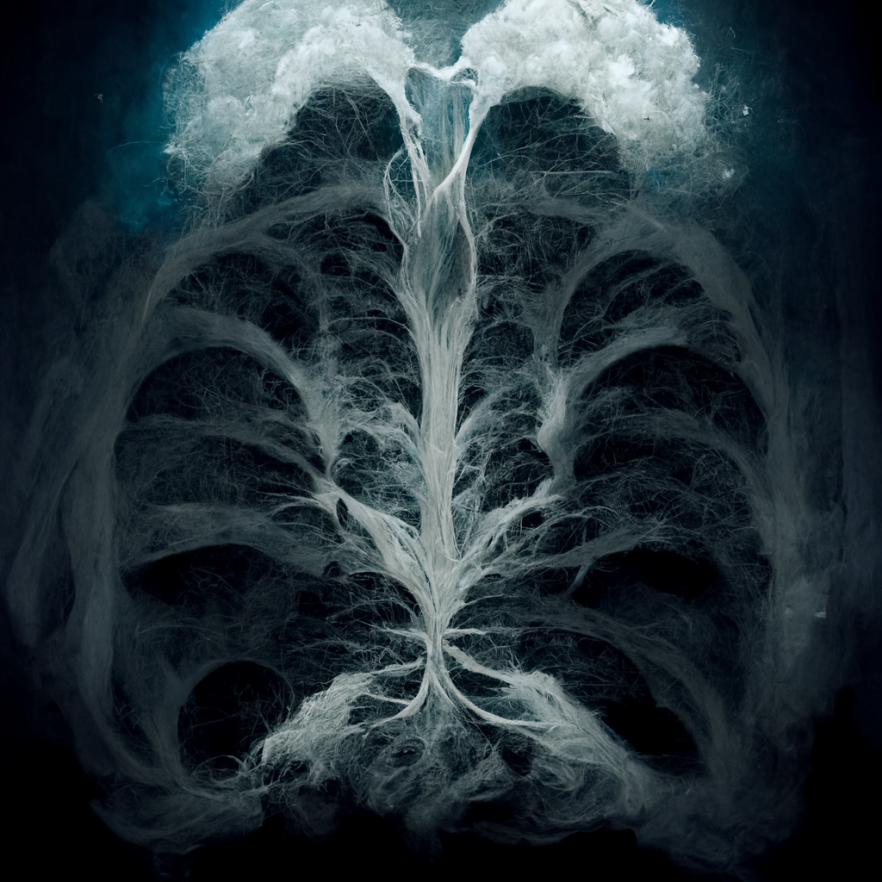
I started making pneumonia art, around ideas of air & deep water, breathing & the dreamy state like narcosis that you get. I used my pneumonia lung X-rays as the basis, feeding them into my AI.
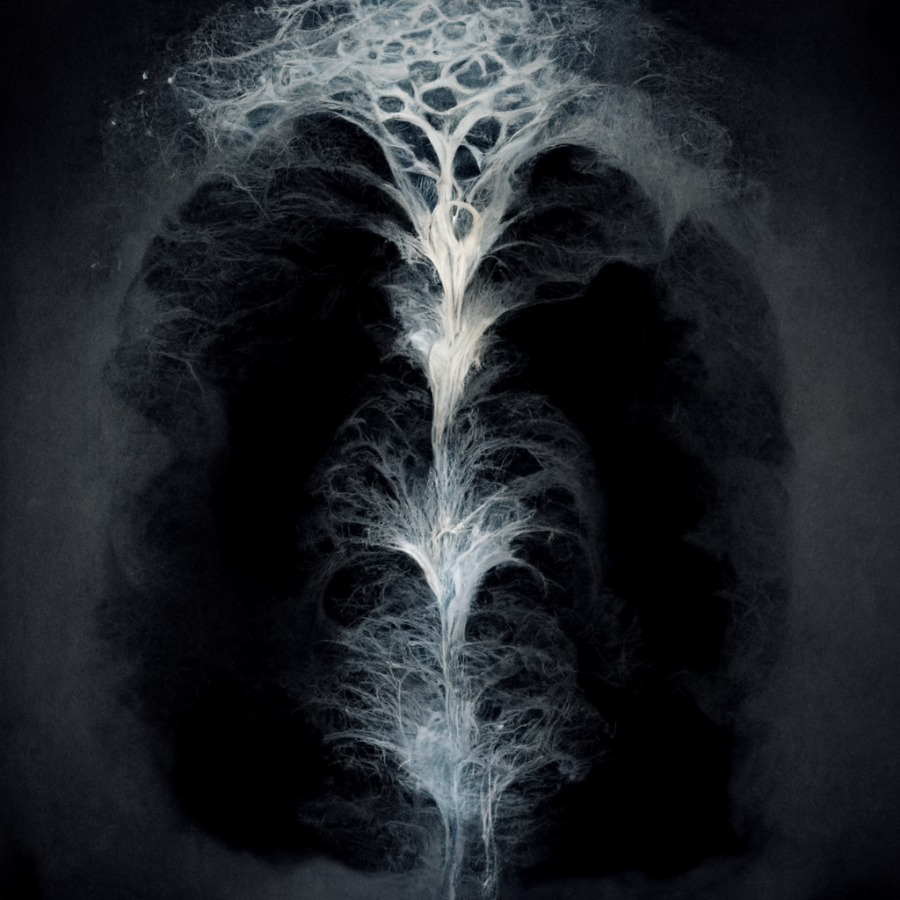
They are dark and clouded, fizzing with the tell-tale blurred and uncertain chalklines of tissue, and delicately spun cotton-wool constellations of tiptoeing asphyxia, all there in the blackness of the plate. But I told the AI how I saw them – how they felt in the midst of the strange, detached lightheadedness and lakes of disassociative fevers.
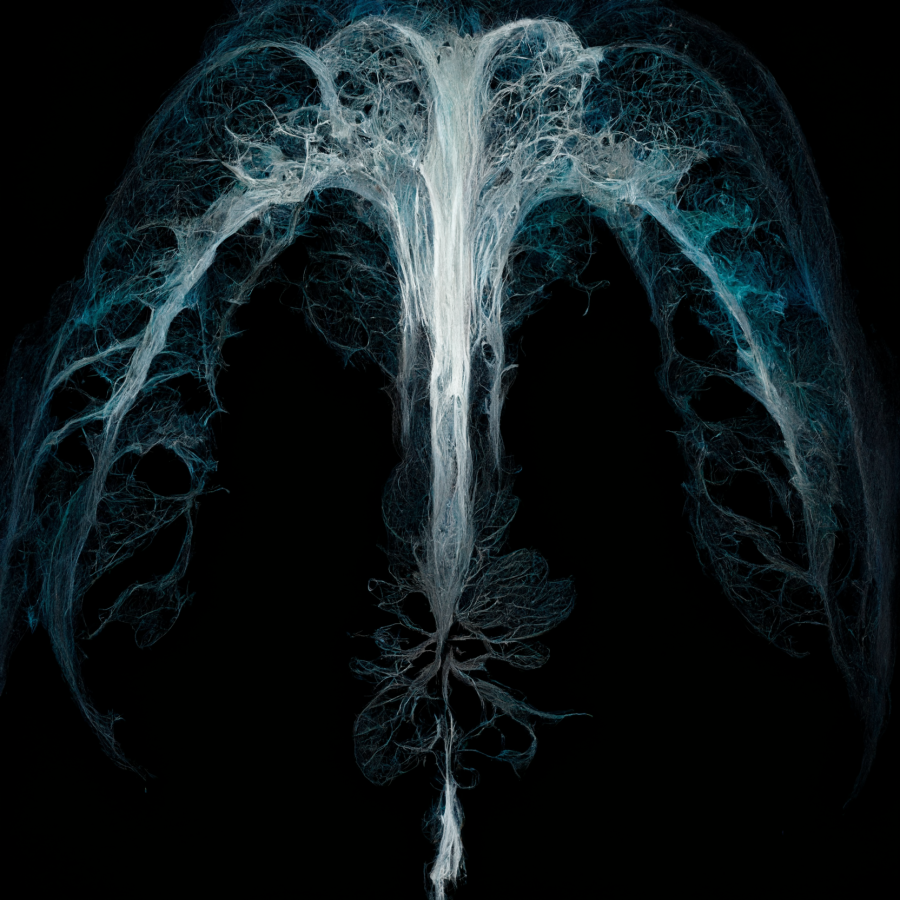
And as I did, they spilled out from the AI. And the X-rays began to look like deep-sea creatures from the Midnight Zone, or forests under stars.
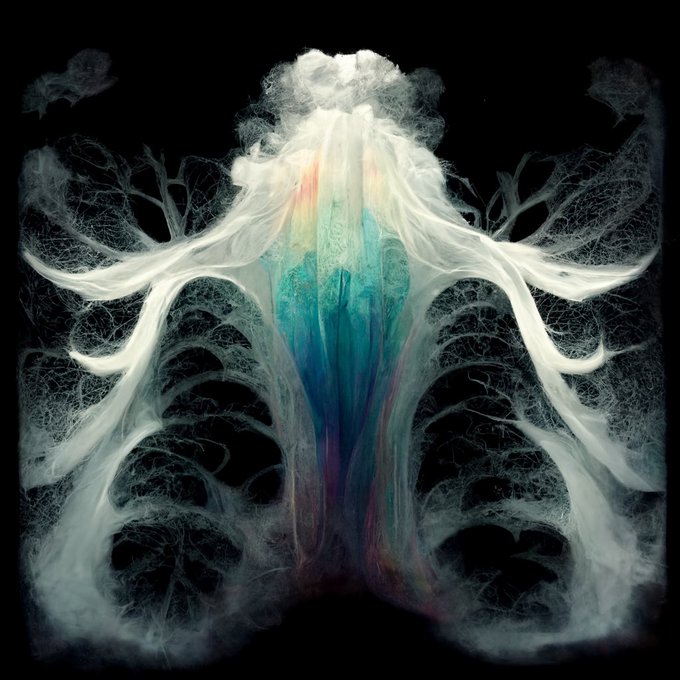
And the sequences became dreamscapes of their own. The threads and clouding of pneumonia was starlight, mycelium, root networks, dust. The shape of the lungs themselves, a canopy, or a bell jar; or the range of the undersea camera. The airways became strange, alien flowers, enchanted night forests, or jellyfish and strange organisms from the deepest ocean trenches.
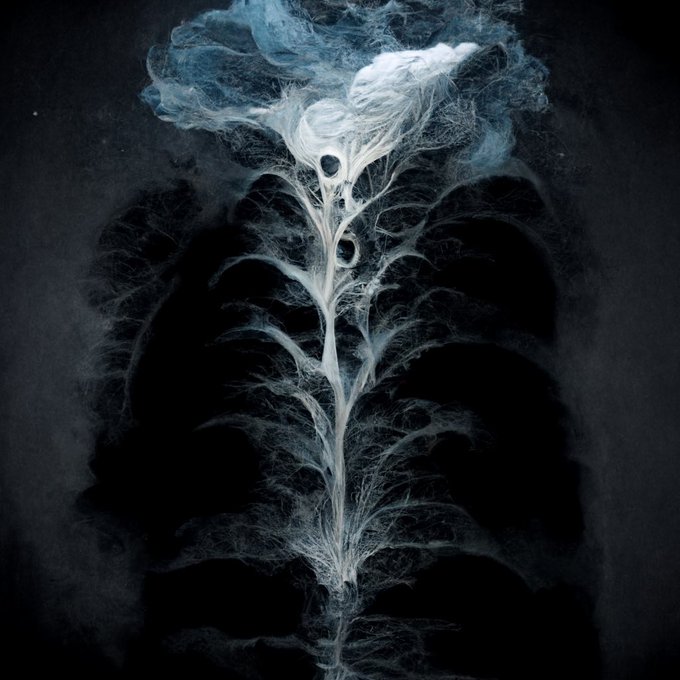
I began accompanying the lung X-rays with lines from my notebook. This one was “X-Ray of the pneumonia tissue… dreamlike journeys through its cloudy threaded ways into sleep”.
The space, though. The black space of the X-ray plates was the best of all. But to know why, you have to think yourself into the mind of the person whose lungs are photographed. The person for whom black space meansclarity, and airways free of the creeping white fluff of the disease; the blank is space to breathe, and health, and hope. In the hospitals, it was something you fixated on, watching it grow or shrink. And here, magically, it became space itself: dark, clear oceans; space itself, dusted lightly with whole, distant constellations. Dark skies to lose yourself in, above those choking white clouds that gripped the ground and the vapours and fogbanks that crept cold and silent across everything on it.
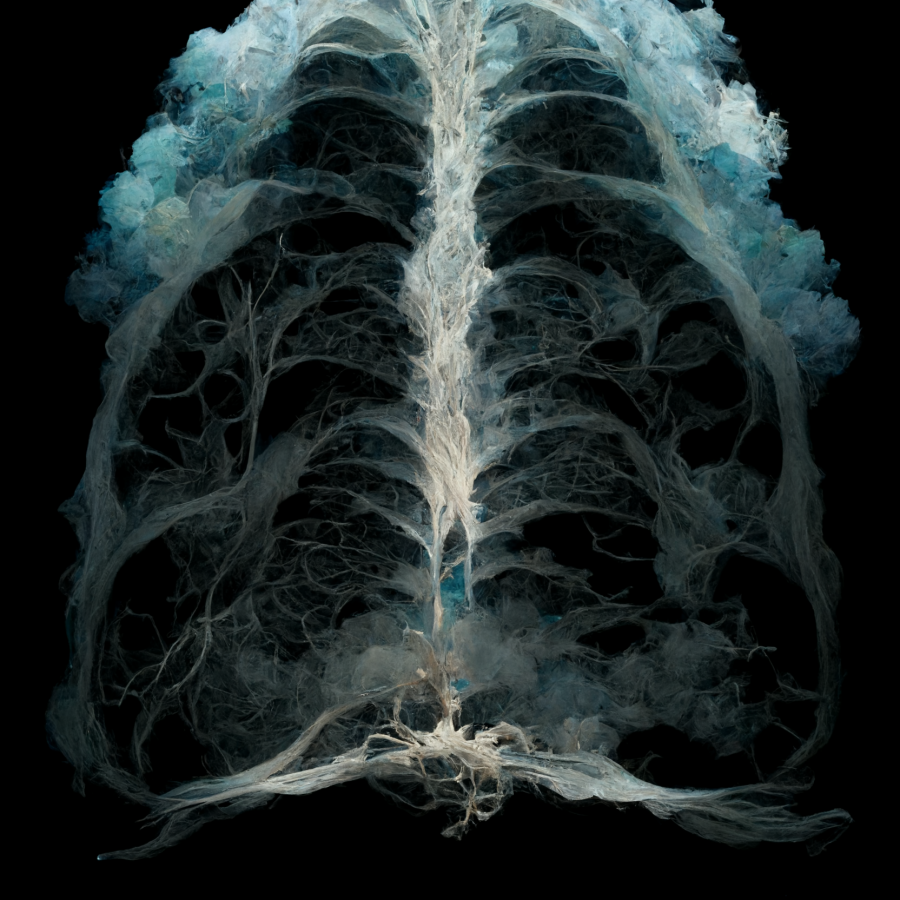
Stranger still when I used my fever notes as AI prompts without the X-rays. This was: “Pneumonia is a presence, always inside my mind, whispering: ‘If not now, then when?’” It kept creating views of the outer world with trademark thready, mycelium-like lung clouds spreading through it.
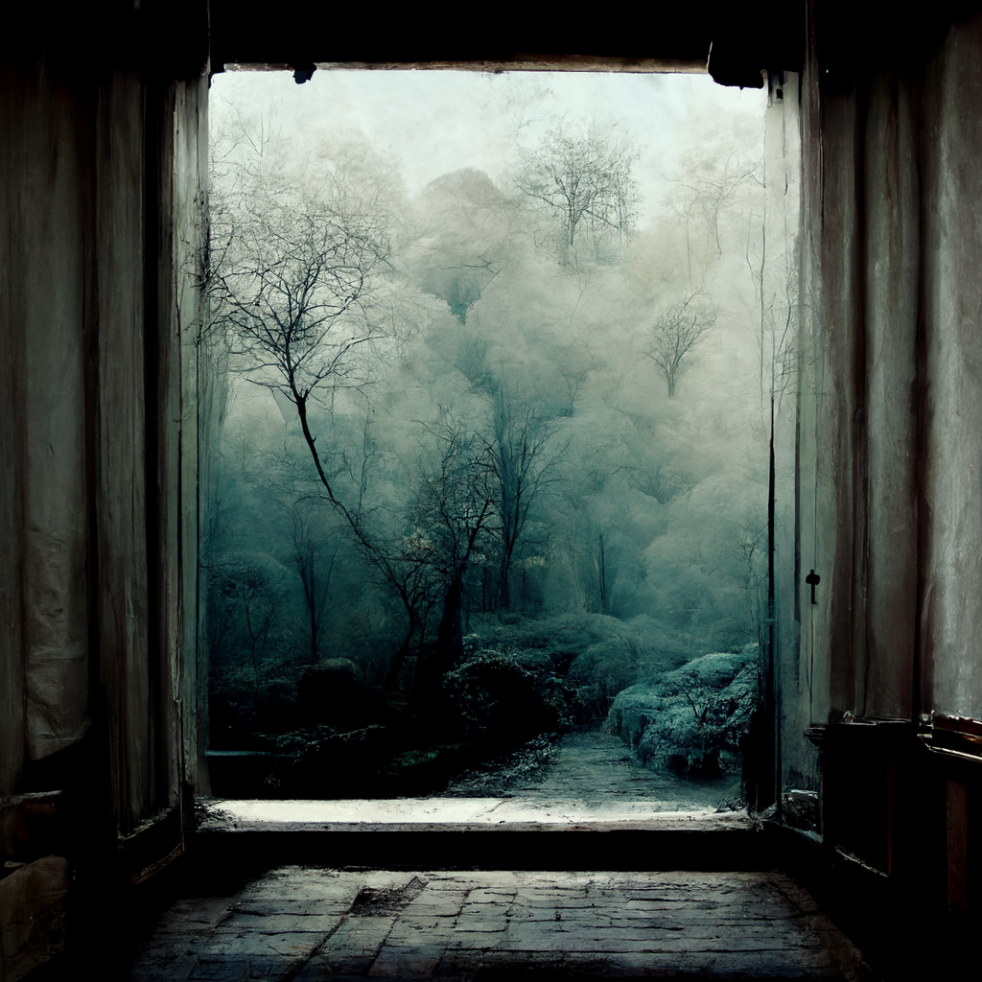
Here it is spreading across bedroom, garden, town, and – to test it against a lab aesthetic convention with strong investment in clarity, so I could be sure this wasn’t coincidence, a Flemish still life. And still the external world is crept across by the cloudy lung threads.
I survived, and I treasure these postcards from the strange dreams that came. My own X-rays, turned into something better than diagrams of a disease.
A final note: Pneumonia as a silent, worldwide killer of the very young
The thing is, for all its gentleness with me, pneumonia is not gentle. It is the leading cause of infectious death worldwide for children under five years old, and accounts for 14% of all mortality in that age group. Its creeping nature – it seems, even when you have it, to want to cloak itself as other things, and the lethargy and coughs and weight loss are weird and slow and easily discounted at first – means it is often in its worst stages before detection. Of course, the risk factors we know. Smoke, pollution; bacterial, viral and fungal exposure of course; and malnutrition – the reason it is prevalent in developing countries. This World Health Organisation report on pneumonia in children will tell you all you need to know.